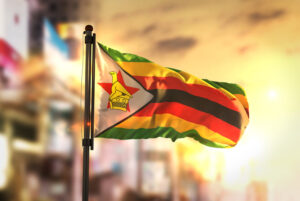
All about Zimbabwe’s Latest Shot at A Stable Currency: The Gold-Backed Zig
The comments below are an edited and abridged synopsis of an article by Alister Bull and Ray Ndlovu, BizNews
In April, Zimbabwe made its sixth attempt since 2008 to establish a credible national currency by introducing the ZiG, short for Zimbabwe Gold. This new currency is backed by the central bank’s bullion and foreign currency reserves, marking a significant shift after the disastrous hyperinflation of 2008, which rendered the Zimbabwean dollar worthless and turned it into a global symbol of economic mismanagement. Confident in this new approach, Zimbabwe plans to make the ZiG the sole legal tender, a bold move given that the US dollar still dominates transactions in the country.
The Fall of the Zimbabwean Dollar
The Zimbabwean dollar, reintroduced in 2019 after a decade of relying solely on foreign currency, rapidly lost value against the US dollar. By April 2023, it had depreciated by 80%, prompting the central bank to abandon it. The collapse of the Zimbabwean dollar forced the majority of the country’s economy to operate in US dollars, as people lost trust in the local currency due to the traumatic hyperinflation of 2008, which wiped out savings and undermined public confidence.
The Introduction of the ZiG
The ZiG began trading on April 8, 2023, at an exchange rate of 13.56 to the US dollar. The transition to the new currency involved converting all Zimbabwean dollar accounts to ZiG and adjusting systems across banks, retailers, and mobile-money platforms. Although the process was challenging, it marked a significant step towards stabilizing the nation’s currency. The Zimbabwe Stock Exchange also rebased its listed securities to align with the new currency. To ensure international recognition, the ZiG was registered with the International Organization for Standardization under the code ZWG, adhering to global currency standards.
Backing and Implementation of the ZiG
The ZiG’s value is supported by $100 million in cash and 2,522 kilograms of gold, worth approximately $185 million. New banknotes were issued on April 30, followed by a nationwide publicity campaign to promote the new currency. To stimulate demand, the government has mandated that companies pay at least half of their quarterly taxes in ZiG, and some taxes must be settled exclusively in the new currency. This move aims to increase the currency’s circulation and acceptance among Zimbabweans.
Assessing the ZiG’s Success
Restoring confidence in a currency after repeated failures is no easy task, and it remains to be seen whether the ZiG will gain widespread acceptance. The government has been pressuring citizens to use the ZiG by requiring government services to be paid in it and penalizing traders who refuse to accept it. Early indications suggest a decline in dollar-denominated transactions from 85% to around 70% since the ZiG’s introduction. Additionally, the government has hinted at a dedollarization plan, with potential full implementation by 2026. While the ZiG appears to have helped curb inflationary pressures since its launch, only a few months of data are available to evaluate its long-term effectiveness. Zimbabwe’s history of economic instability, including frequent crises, hyperinflation, and failed currency attempts, casts a shadow over this latest effort. However, central bank Governor John Mushayavanhu has vowed not to repeat past mistakes, particularly the unchecked printing of money, offering a glimmer of hope for the ZiG’s future.

